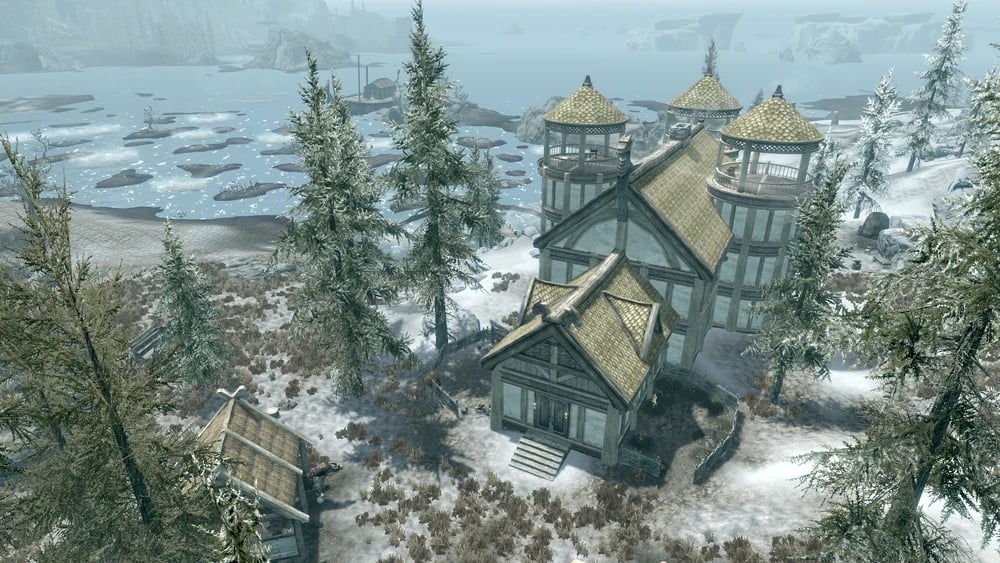I had fun thoughts on Pantone’s Color of the Year and home paint choices all lined up for today’s blog...but a significant portion of southern California is currently on fire, so it feels terribly tactless at worst and like a missed opportunity at best, to talk about anything other than insurance.
First: my thoughts are with everyone who is being impacted by the fires; the emotional, logistical, and financial toll is unfathomable, both on a personal and municipal level. If you’re looking for places to direct support, my community down south has largely suggested the LAFD Foundation, the California Fire Foundation or American Red Cross. If you’re displaced and need a crash pad, send me a message.
That Whole Insurance Thing
On to insurance. If you live in California, regardless of whether you’re a homeowner, you’re probably aware that insurance is a “thing” here. (If you’re out of state, you probably still know that). What that actually means is that it’s been increasingly expensive and challenging to procure a home insurance policy in this state—and sometimes challenging even to keep your existing insurance, even if nothing material about your home has changed.
I’m not keen on fear-mongering, and all of my clients have in fact been able to get insurance. This isn’t a pessimistic piece bemoaning the ways our political failings have negatively impacted our infrastructure, this is a practical overview of where we’re at in the insurance landscape, and how we build that into the home-buying process and home-owning experience.
I’m going to focus on insurance as it relates to buying and paint in fairly broad strokes for the sake of readability, but if you’re dying to get into the details or have specific questions, please reach out because the conversation around insurance in California really is interesting (if morbidly so, sometimes).
How We Got Here
Suffice it to say that in the last handful of years, insurance providers increasingly began shying away from writing new policies in California, and making the requirements for those policies they would issue, more stringent; in particularly devastating fashion, the behemoth stalwarts like Allstate and Farmers counted themselves among those pulling out, followed last year by the cherry on top, State Farm.
The “whys” are layered and complex but the short version is that the confluence of inflation and an increase in wildfires started making insuring property out here markedly riskier for the providers, so they cut their likely losses and left California homeowners to seek less viable and more limited alternatives—and at a higher cost.
Fast forward to today (and like, today-today) where we’re now in what you might hear referred to as an insurance “crisis,” in which homeowners need insurance more than ever, and what they need is harder than ever to get.
Why You Need Home Insurance
Yes, of course the reason you want insurance is to protect yourself against potential loss like in the event of natural disaster, whether a minor-but-destructive mishap or the kind of catastrophic annihilation we’re seeing as I write this.
But you also need insurance to purchase a home, if you’re going to finance that purchase—aka take out a mortgage loan as opposed to paying in all cash—because any lender is going to require a policy be in place to close on the loan, and thus the purchase itself. That whole risk thing I mentioned? Yeah, lenders certainly aren’t signing up for more than they need to, either.
California home prices, particularly in the more populous metropolises (great band name) like San Diego, Los Angeles, and the Bay, are generally prohibitively high without getting a loan (I know, even then); understanding the necessity and timing of procuring a policy is integral to understanding how to buy in this current landscape and market.
There are statutory deadlines and minimum time periods in the escrow process relative to insurance and loan requirements; you can’t simply email the title company your new policy the day before you’re due to get keys, and hope for the best. In the easiest of times, procuring insurance was already an aspect of purchase that had to be considered in a timely fashion during escrow; nowadays, we start exploring insurance options with buyers the moment they even start considering a property.
In fact: insurance is even now one of the explicit default contingencies in the California Purchase Contract. In prior iterations of the form, a buyer could maintain an investigatory (inspection) contingency to both undergo property or pest inspections and consider insurance during that time, a qualification that could be clarified or not in the item regarding additional terms. Insurance has since become such a pronounced and specific concern for buyers that it now gets its very own contingency! A prize no one really wanted, I suppose.
Policy Procurement & Your Purchase Offer
It’s all but required to have a policy, so how do you go about getting it as a home buyer, and how does that play into your offer and to-dos? Let's first address the latter.
In the Bay, we’re usually looking at sub-30-day escrows. When you write an offer to purchase a home, one of the key terms you decide on as the buyer is the length of escrow, aka how long it takes from the day after your offer is accepted, or ratified, to the day you’re on record with the county as the new owner. Escrow is the administrative period during which all the instructions for transfer of ownership are carried out, including monies being accounted for and paperwork being signed; when a loan is involved, there’s necessary processing time in addition to that.
Typical Close-of-Escrow Timing
How you decide on the escrow timeframe in your offer depends on a number of factors.
If you're paying in cash, you can go for a 7-10 day close because there aren’t as many moving parts or involved parties, and you don’t have a lender breathing down your neck about binding policy. [Into the weeds: Check with the listing side to make sure there aren’t considerations like owner time to vacate or de-staging scheduling that would preclude a super quick close.]
If you have a loan, the number one factor in close-of-escrow timing is the time the lender needs to get that locked down. The easy and responsible move when considering an offer? Ask your lender how quickly they can close, add a couple days’ buffer, and go with that. A competitive lender can make it happen in 21 days, and I have a few rockstar mortgage brokers whose business model allows them to nail a sub-14 day close if you really need the competitive edge.
Why Close-of-Escrow Timing Matters
All that said: lately we (realtors and buyers) also consider insurance as part of the timing equation. The process of getting a policy in place can be three weeks, minimum—and current events all but assure that’s not going to get any more efficient. The reason you have to take that timeframe into account is that your lender will require that you “bind” your policy to the loan relatively early on in the loan-processing timeline, such that the process of closing a loan and getting your insurance in place are intertwined.
If your lender says they can close in three weeks, but you’re purchasing a hundred-year-old home that needs enough work to make an insurance provider clutch their pearls...you better have already started your homework in identifying who you can literally bank on to insure, and insure expeditiously so you’re not prolonging escrow and ending up in breach of contract when unexpecteds arise (which...they usually do).
And look: the reason I bring up all this timing business in the first place, is because the real estate game here in the Bay tends to be highly competitive. If you’re the only buyer writing an offer on a home that’s been sitting on market a couple months, then you can afford to be a little more leisurely. If, however, you’re in a multiple-offer scenario in which the sellers have the benefit of choosing the best offer based on its collective terms—which is more often the case—you'll want to give yourself every possible advantage; if you can’t write a cash offer and you’re not waiving all your contingencies, you better make sure you’re boosting your appeal in other categories—like being able to put the whole thing to bed within three weeks, for example.
So How Do You Get Insurance?
I know, this is what you’ve been waiting for! And the answer is that I, your trusted agent, will help you! This article is not purely a pitch for me as an invaluable resource, but hey if the shoe fits. Below is my how-to cheat-sheet. (Don't get too excited about this bulleted list; I’m still committed to run-ons and text walls).
-
Consider insurance early and often in the buying process.
The moment you find yourself more-than-just-liking a home, think about the property and what an insurance provider is going to ask about it. If you’re new to the process, ask your agent what aspects of a home tend to come up as consideration. Common examples include age of the home and/or roof, specifics of the NHD (Natural Hazard Disclosure) like being in a High Fire Severity Zone, presence or absence of retrofitting measures, and whether there is still knob-and-tube (K&T) wiring in the house.
Think about as well building into your budget the cost of insurance, since costs can vary significantly depending on the nature of your policy. It's better to be conservative and subsequently delighted by the money you’re saving, than being surprised with sticker shock. Reach out if you want to discuss what this might look like numbers-wise, and I'll introduce you to one of my preferred insurance brokers.
-
Reach out to providers before you write an offer.
Once you're considering writing an offer, think about which insurance providers you might speak to. Do you already have auto or renter’s insurance with a provider who also offers home? Whom do your parents and friends use? Whom do the sellers currently have in place? Test the waters with a few of those via a quick online search or phone call: do any of them have nonstarters that would render them immediately unable to provide a policy for this particular home?
Providers are fickle, and each uniquely so; the questions they’ll ask, and their standards for underwriting, are all different (fun for everyone!). For example, my buyers on an older home in Oakland’s Dimond District were contending with the presence of some K&T, and Geico of all places didn’t (apparently, surprisingly) bat an eyelid.
-
Apply with multiple providers as soon as you're in contract.
Congratulations, you wrote the winning offer! Unfortunately there’s no time to luxuriate yet. In addition to making sure your lender has everything they need, you’ll want to get the insurance application process going pronto. Hopefully you’ve already identified a couple providers by this point such that you can essentially continue the process you started in your research phase. As I keep saying, don’t be afraid to ask your agent for help as needed—some providers will ask for things like aerial shots of the house, or inspection reports, or invoices from engineers for retrofitting, and your agent can be your right-hand.
Your agent can also reach out to insurance brokers for you—I promise any agent worth working with has at least a couple killers on speed dial at this point—as opposed to providers themselves. Brokers will help you find a provider who will fit the bill so you’re not just needle-in-a-haystacking if things are really feeling rough. And no, you’re not on the hook for paying those brokers extra for the trouble, the insurance providers will pay the brokers directly for bringing in customers.
-
Don’t Stress (Seriously).
If the above is making you itchy and feels at all overwhelming, I get it, and I promise it’s not actually as nightmarish in process as trying to conceptualize it. Most of the “scramble,” if it can even be called that, gets wrapped up within the first week of being in escrow, after which point it’s really a matter of crossing Ts and dotting Is administratively in cooperation with the lender, insurance, and title. Your agent can hold your hand through all of that, and you will get insurance. If you’re a worst-case-scenario type, don’t worry, I've processed my share of Extension of Time Addendum requests to accommodate a longer escrow, and everyone survived (and closed).
And guess what, there’s a failsafe here. The California FAIR Plan exists for the express purpose of making sure homeowners can get at least fire coverage when other providers won’t come through. This option is not ideal, but it is sufficient. You'll pay a premium, sometimes twice as much as you’d pay otherwise, but you can always replace this policy with a more comprehensive and desirable one when the opportunity presents itself—and you’ll typically get the prorated remainder of the existing policy refunded to you upon installment of the new one.
My buyer closed this past fall on a beautiful almost-fully-renovated duplex in Noe Valley, and despite it being meticulously upgraded, insurance providers left and right were getting stuck on the fact that it was technically more than a hundred years old. Ultimately, I had my buyer get the insurance application process going with three providers concurrently—two comprehensive, more ideal policies through PURE and Chubb via one of my rockstar brokers, and the California FAIR Plan. One of my brokers had advised that FAIR was experiencing a 2-3 week turnaround and that we should get going, so we started that process as a back-up in tandem with our other exploration. Ultimately, PURE came through and we closed in three weeks no problem.
Moving Ahead in California
Where does that leave us? You, my favorite buyer, have a beautiful new home with insurance in place—but what are we looking at as a state? The scenarios I’ve described above are unlikely to change anytime soon, and in fact you shouldn’t be surprised when more providers attempt to up their standards for underwriting or pull out of California entirely. The landscape may get worse, but it won’t be impossible.
There are also going to be countermeasures to this would-be withdrawal from the market. For example, California Insurance Commissioner Ricardo Lara at the end of December unveiled the latest in a series of intended reforms, a regulation that requires providers in California to increase coverage in high-risk zones. In the wake of the latest fires, Lara further issued a one-year moratorium on cancellations and non-renewals for certain areas in Los Angeles particularly impacted by fires.
There will certainly be more where that came from. The progression of climate-related issues is an unfortunate (to say the least) reality not just in California but also globally, so updating legislature and taking appropriate action at civic levels to ensure life can continue on in reasonable day-to-day fashion is simply a given.
Like I said: forget fear-mongering, and approach processes practically. (...And I'd be remiss not to encourage you to think about these issues when you consider your voting responsibility in upcoming elections).
Let’s talk in coming days, months, and years; if you have specific questions, I’d love to chat. I'm a broken record on this, but humans have a remarkable ability to adapt and persevere, and as a closing point of fact: all of my clients have gotten insurance. And, none of them closed late either.




